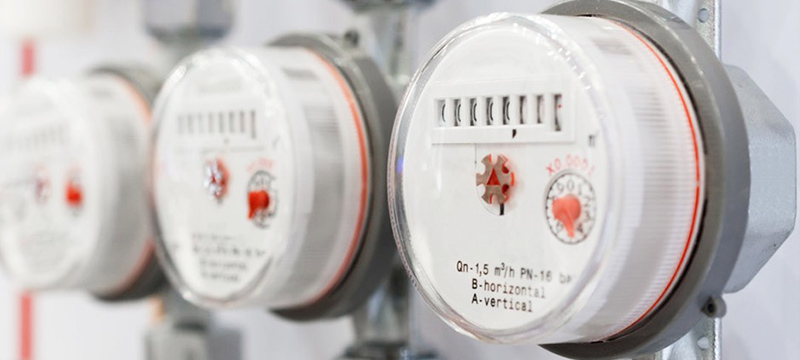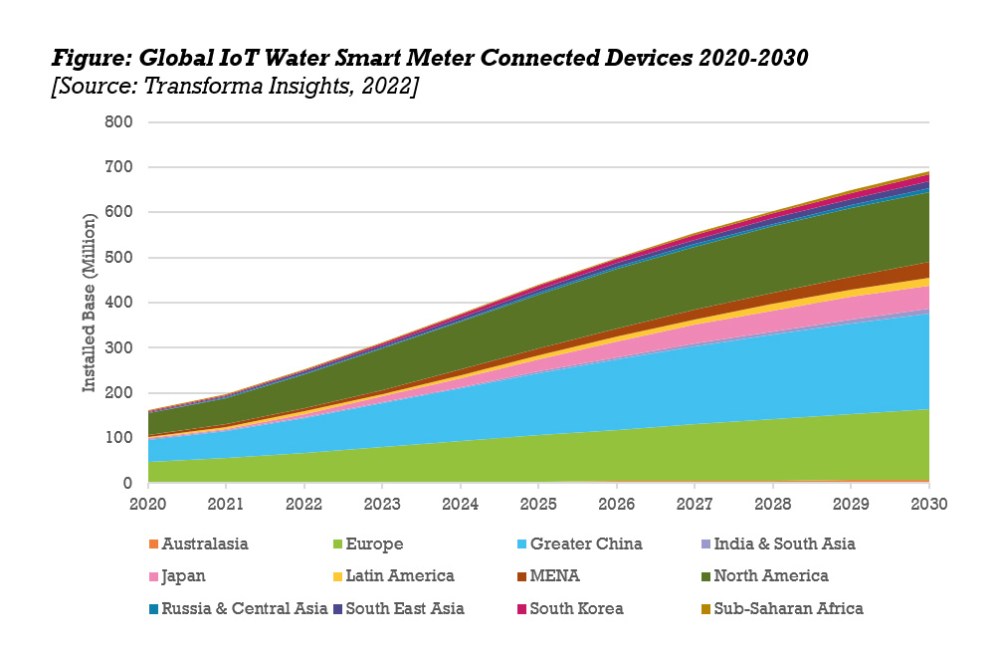[ad_1]
Nikita Singh, Lead Analyst, Transforma Insights.
Water is probably the most important and overly used global natural resource. According to a report from the World Resource Institute, about one-quarter of the world’s population, spread across 17 countries, faces extremely high level of water stress and by 2040, it is most likely that 1 in 4 children will be living in areas of extremely high water stress. Water conservation has become one of the direst needs today and the biggest challenge for utilities in the water sector.
Transforma Insights predicts 700 million smart water meters by 2030
Last week Transforma Insights published two reports which examine the ways in which IoT will be used to tackle the challenges of conserving water. The first, ‘Water Smart Meters: 700 million connections by 2030 to solve issues related to water scarcity and loss’ provides a summary of our view on the IoT market for smart water meters. It examines the reasons for the increase in installations along with detailed assessment of the progress of rollouts and the various communication technologies used across major geographies for these meters.
There are multiple ways to overcome challenges related to water losses and conservation, one way of conserving water is through detection of water leak or loss which is commercially defined as ‘Non-Revenue Water’ (NRW). Smart water meters play a key role in water conservation through early and accurate leak detection. These meters are equipped with sensors for leakage detection based on the water flow rate at any given point of time. This in turn helps the local utility track the water consumption per user and detect any losses or changes in the level of consumption. Detecting unexpected drops in pressure within the water grid, allows for identification of leaks before the metering point.
In total there will be 700 million smart water meter connections at the end of 2030, up from 196 million at the end of 2021. Greater China will be the region with the greatest number of devices throughout the forecast, with 31 percent share of total connected devices in 2030. North America will have a 29 percent share by 2030 followed by Europe with a share of 28 percent in 2030.
The arrival of new connectivity technologies will help to accelerate rollouts, as illustrated by the fact that the dominant connectivity technologies will be 5G mMTC (66%), which incorporates NB-IoT and LTE-M, and LPWA non-mMTC (28%) followed by 4G Cellular (6%). By 2030, there will be a significant change in the market from the current scenario that mostly uses RF Mesh as the most common primary communication technology.
Encouraging behavioural change
The other prominent way in which smart meters encourage water conservation is through managing behavioural changes related to water conservation. It is becoming increasingly common to see fines or penalties for wasting water on both consumers and utilities. For instance, California has introduced fines of USD500 per day on its citizens for wasting water. In Italy certain regions have introduced water-rationing measures, ranging from fountains being switched off and nightly restrictions on tap water, ban on using water for gardens and allotments, filling swimming pools and for washing cars.
Smart water meters provide feedback both to the utility provider and the user based on the amount of water consumed. Deploying these meters helps water utilities track water usage and to create and utilise a tariff structure that incorporates an allocation or entitlement to a set amount of water for a fixed service charge, disincentivising excessive water usage. However, it must be noted that the use of variable consumption charges per user creates a monetary benefit for the water utility from increased usage.
The smart grid also plays a major role in water conservation
The second report published by Transforma Insights was ‘Grid Operations: 91 million connected devices by 2030 across electricity, gas and water’ which examines the up-stream monitoring of distribution networks for electricity, gas and water.
One of the most important physical infrastructure connecting the smart water meter and the end water resources (such as lakes, ponds, streams and others) is the smart grid. The smart water grid is significantly useful in maintaining a continuous supply of water even in times of catastrophe such as drought and floods. These grids are equipped with sensors that capture information related to water volume, pressure, temperature, chemicals, leak detection, and supply levels. Additionally, these grids are equipped with automated valve operations that can then respond by shutting valves in the affected areas to prevent flooding, further damage, water loss, or spreading of contaminated water.
Data management software within the grid can then be used to analyse the water flow pattern, enabling predictive modelling and decision making based on better assessment of energy use, water supply, pricing, capex, and labour.
The wider sustainability impact
As well as the two reports highlighted above, Transforma Insights recently published its report ‘Sustainability Enabled by Digital Transformation’ looking at the impact of using IoT and other disruptive technologies on enterprises meeting their sustainability goals. For more on this topic, check out our recent blog post ‘IoT solutions in agriculture, utilities and smart buildings will be key to relieving pressure on increasingly scarce water resources’.
[ad_2]
Image and article originally from iotbusinessnews.com. Read the original article here.



